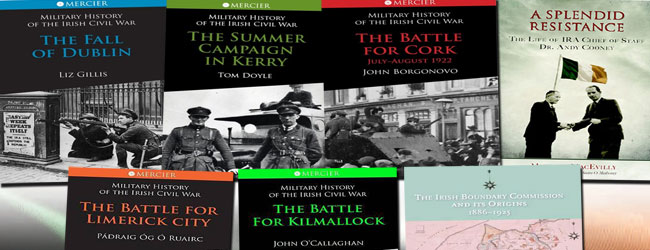5 December 2011
History writing thrives on eve of ‘decade of centenaries’
BY MÍCHEÁL Mac DONNCHA
WITHOUT QUESTION, the publishing highlight of the year 2011 for Irish republicans had to be the launch of Ruán O’Donnell’s Special Category – The IRA in English Prisons, which is covered elsewhere in this paper. I was at the launch in Kilmainham Jail and, thinking about it afterwards, it was a landmark event with the testimony of Irish republicans who experienced jail in England forming the basis for a monumental work of history that will endure for decades.
It is vital that republicans ensure that our own story is told, especially on the eve the ‘decade of centenaries’ marking the revolutionary events in Ireland from 1913 to 1923. It is vital also that history is retained in the curriculum of our schools. There is concern that one of the results of the reforms of the Junior Certificate announced by Labour Education Minister Ruairí Quinn may be the further relegation of history to a neglected optional subject in secondary schools.
In an article in the current issue of the excellent History Ireland magazine, Elma Collins highlights this danger and correctly appeals for reform that keeps history at the heart of the curriculum. Her article, though, is marred by the assertion that “nationalist myths went largely unexamined in the schools until the 1960s” and that “we saw the results of that in 30 years of needless ‘armed struggle’”. Given that the armed struggle was fought in the Six Counties and that the alleged nationalist myths she refers to were being taught in schools in the 26 Counties, the connection is somewhat tenuous. One would have thought that an author of history textbooks would acknowledge that the armed struggle came about as a result of cataclysmic political events, not at the prompting of over-enthusiastic Christian Brothers. I hope she read the fine article on internment in the same issue.
Mercier Press has consistently published important works on Irish history and its latest series on the military history of the Irish Civil War deserves special mention.
The Fall of Dublin, The Battle for Cork, The Battle for Limerick City, The Battle for Kilmallock and The Summer Campaign in Kerry provide new insights into that war. The clear view emerges that, at the start of the war, the republicans were militarily in a stronger position than the Free Staters. The majority of the IRA were anti-Treaty and they controlled most of the territory where the war against the British had been fought at its fiercest, predominantly in Munster. However, they were not prepared for war.
The Free State attack on the Four Courts came as a shock and the battle for Dublin was quickly lost by the IRA. What the Free State lacked in terms of committed fighters they made up for in terms of a centralised command, money and guns from England to pay and arm new recruits, and a ruthless determination to establish their Provisional Government while the republicans were always on the defensive.
There was a window of opportunity while the ‘Munster Republic’ existed for the anti-Treaty IRA to successfully resist the Free State advance and perhaps turn it into conventional warfare. But the strategic vision and command structure to achieve this did not exist in the IRA, the determination of IRA Chief of Staff Liam Lynch notwithstanding. Once Limerick and Cork cities were lost, the IRA quickly reverted to what they knew best – guerrilla warfare and sabotage, but this time without the same extent of public support they had enjoyed during the Tan War.
One of the many republicans whose commitment was galvanised in the Civil War was Andy Cooney, a member of the Four Courts garrison. He was elected IRA Chief of Staff in 1925, preceding Maurice Twomey (1926-1936). The late Michael Mac Evilly’s A Splendid Resistance, a biography of Cooney, was published this year. It sheds much light on interesting aspects of the post-Civil War period, the relationship between the IRA and early Fianna Fáil and Irish America.
Finally, the great British swindle that was the Boundary Commission is chronicled in The Irish Boundary Commission and Its Origins 1886-1925, by Paul Murray (UCD Press). Conceived by British Prime Minister Lloyd George as a means of getting the agreement of the Irish delegation in London in 1921, mandated as they were to ‘break’ with the British on partition, the commission was a fake from the start. The Six-County Orange state had been well established with military repression and sectarian terror by the time the commission was set up. EvenThe Irish Independent said that the ‘Treaty’ would never have been approved if the Boundary Commission clause had been interpreted the way the British interpreted it in 1925 as meaning minimum adjustments to the Border. So it turned out, and we still live with the consequences today.
Follow us on Facebook
An Phoblacht on Twitter
Uncomfortable Conversations

An initiative for dialogue
for reconciliation
— — — — — — —
Contributions from key figures in the churches, academia and wider civic society as well as senior republican figures





